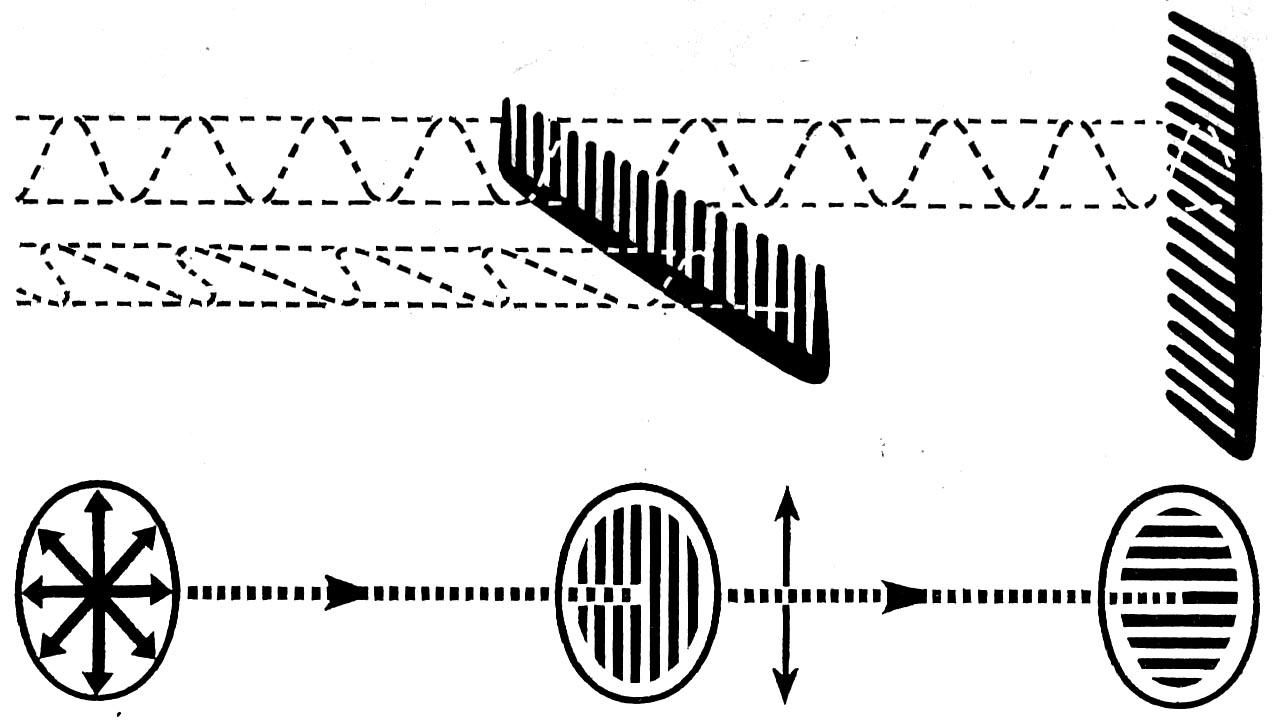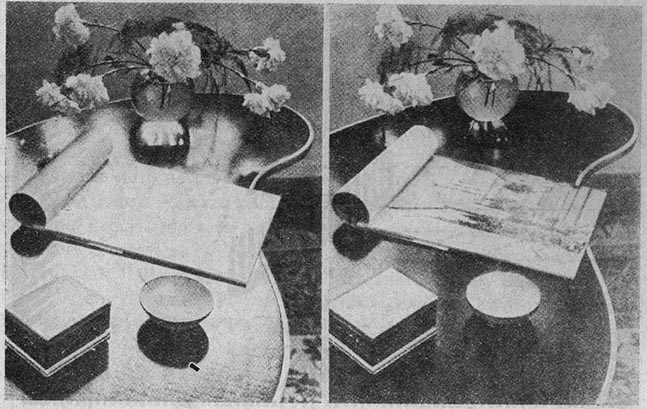POLARIZING FILTERS
Light propagates in a wave motion. Vibrations of this motion occur in all planes intersecting along the radius. This phenomenon is the cause of reflections when taking pictures of objects with shiny surfaces (reflections in glasses, in frames behind glass, planes of water, itd.).
To eliminate reflections, we use polarizing filters, having this property, that only rays vibrating in one plane pass through. This is due to the properties of certain minerals (np. Iceland spar), which eliminate multiplanar vibrations of rays passing through them. By putting a filter made of a plate of such a mineral on the lens and turning it to the right or to the left, we can eliminate harmful reflections, leaving the image of the object free of them. Such a glass is called a polarizer. If we put a second one in front of it, but set like this, that it will eliminate the rays transmitted through the first one, no more rays will pass through this double filter. This second pane is called the analyzer.
After installing a pair of filters on the lens, we turn the front filter around its axis for that long, until we get the maximum elimination of unnecessary rays (reflections). Of course, polarizing filter requires two, triple the exposure time (drawing).

Drawing. Operation of polarizing filters. Rays falling from the left side, vibrating in all directions, are reduced to one plane of vibration (polarized).
Polarizing filters are widely used. It's common knowledge, how difficult it is to photograph reflective objects. Pictures through display windows, portraits of people with glasses, from which glasses it is impossible to eliminate reflections, pictures of shiny, polished furniture, paintings with glossy surfaces in museums, here are some example situations, where a polarizing filter is necessary (drawing).

Drawing. Operation of the polarizing filter (Bernotar Zeiss): a — without filter, b — with a filter.
Need to notice, that the polarizing filter does not work when photographing metal surfaces; they would have to be illuminated with already polarized light.
The filter should rotate on the lens as long, until the reflexes fade, which allows for clean, correct photo, sometimes without such a filter it is not possible at all.
Also in landscape photography, such a filter can do a great job, because sometimes when sunlight falls from the side, it is polarized by reflection from air particles saturated with moisture or dust.